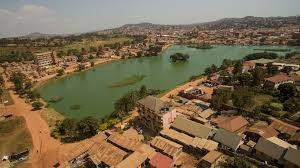What is Urban Lake?
What is Urban Lake?
According to the National Lake Conservation Plan (NLCP), a water body having a minimum depth of three meters, spread over more than 10 hectares, and having no or very little aquatic vegetation, is considered as a lake.
>>Urban lakes are those lakes which are located entirely within city limits (census town) and directly surrounded by urban developments, with some recreational facilities limited to the shoreline area (parks, playgrounds).
Importance of Urban Lakes ::
>>Historically, cities were built along waterways or lakes which influence the development of urban areas. They play a major role in providing environmental, social and economic services.
>>They can ease the impact of floods and droughts by the means of storage.
>>They also help in replenishing groundwater level as they are essential receptors for groundwater recharge, positively influencing water quality of downstream watercourses and preserving the biodiversity and habitat of the surrounding area.
>>Lakes are cooling agents and are essential to the urban microclimate.
>>They provide prime opportunities for recreation, tourism and domestic purposes.
>>They constitute a primary source of water supply in many places.
Threats to Urban lakes::
Pollution: Explosive increase in the urban population has resulted into disposing of untreated local sewage and solid waste in to urban lakes and in many cases these water bodies have been ultimately turned into landfills.
Eutrophication: The entry of nutrients through raw sewage cause various destructive changes in the lakes such as prolific growth of aquatic weeds in lakes and ponds that ultimately disturb and kill the ecology of the waterbody.
Encroachment: Due to rapid economic development even a small piece of land in urban areas has a high economic value. Hence, these urban water bodies are no more acknowledged for their ecosystem services but as real estate leading to high scale encroachment.
Illegal Mining Activities: Illegal mining for building material such as sand and stones on the catchment and the bed of the lake also have extremely damaging impacts on the waterbody.
Unplanned Tourism Activities: Lack of systematic planning and regulation and absence of garbage disposal facilities has contributed to the degradation of many water bodies especially at the high-altitude lakes, for example- Dal Lake in Srinagar.
Cultural Misuse: The misuse of these water bodies by local communities for their cultural or religious festivals such as the immersion of idols are particularly a source of serious pollution in lakes.





No comments:
Post a Comment